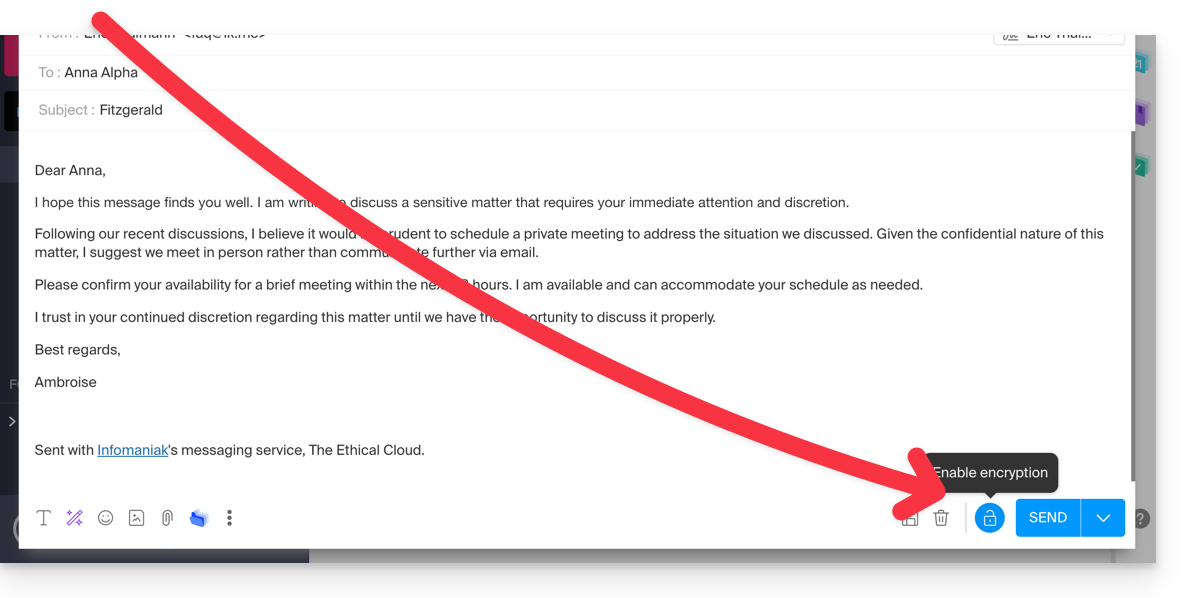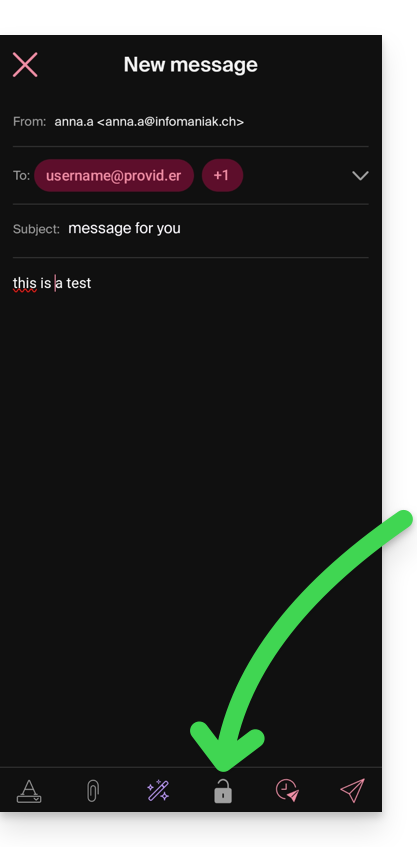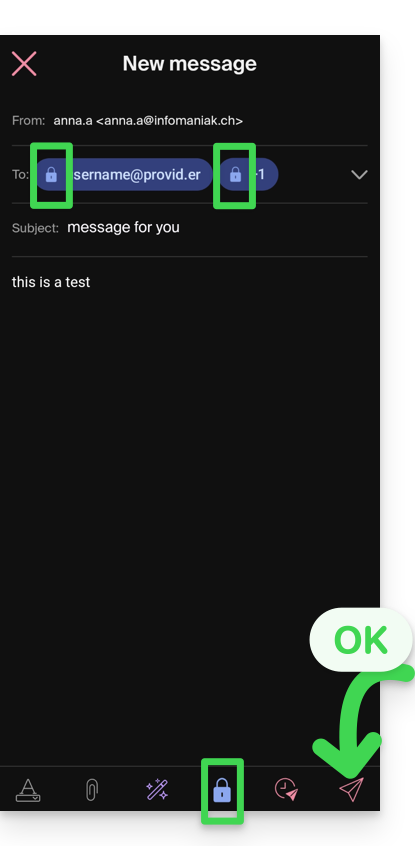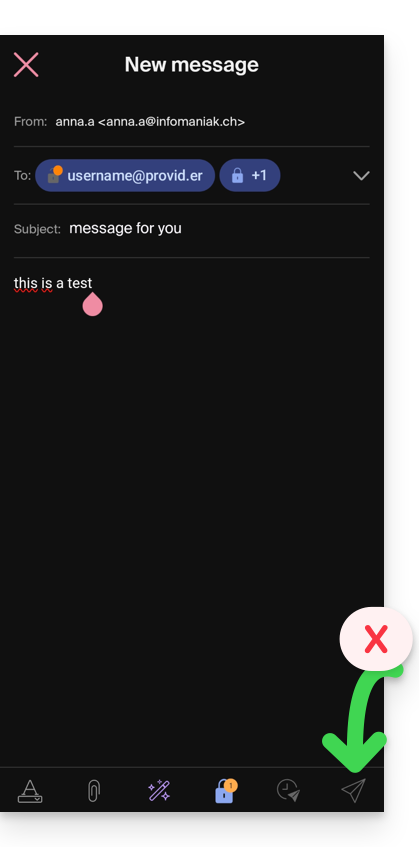1000 FAQs, 500 tutorials and explanatory videos. Here, there are only solutions!
Secure an email send with an encryption key
This guide for the Web app Mail Infomaniak (online service ksuite.infomaniak.com/mail) or the mobile app Infomaniak Mail (application for iOS / Android smartphone or tablet) explains how to enable encryption for emails sent from Infomaniak Web and mobile services.
Preamble
- When encryption is enabled, emails and attachments are encrypted as soon as they are received on Infomaniak servers, via the public keys of senders and recipients.
- Each email address generates a key upon first use, securely stored in Infomaniak data centers.
- The keys are based on elliptic curve cryptography (ECC) and use the OpenPGP standard.
- They are themselves encrypted in AES-256-GCM with automatic decryption via Infomaniak authentication.
- In search results, only the subject of encrypted messages will be visible, while their content will remain secure during storage.
Enable email encryption…
…from the Infomaniak Web Mail app
To automatically encrypt a message sent to an email address:
- Click here to access the Web app Mail Infomaniak (online service ksuite.infomaniak.com/mail).
- Compose a new message as usual.
- Click on the lock icon to the left of the Send button to enable encryption:

- Confirm the action if a confirmation window appears.
- The icon now represents a closed lock and the color of the whole is changed.
- Press the Send button.
The action must be performed for each new send.
A. Recipient whose email is managed with Infomaniak
If the recipient of the encrypted email has an email address managed with Infomaniak, the encryption is done in a completely transparent manner for the sender and the recipient. A note will indicate the encryption of the message…
- …in the recipient's inbox:

- … when opening the received message:

- … and in the folder of messages sent by the sender:

B. External recipient
If the recipient of the encrypted email has an email address managed outside of Infomaniak services, encryption is still possible, but it requires the definition of a password:
- Click here to access the Infomaniak Mail app (online service ksuite.infomaniak.com/mail).
- Compose a new message as usual, but addressed to an email address outside of Infomaniak.
- Click on the lock icon to the left of the Send button to activate encryption.
- A modal opens to allow you to define a password.
- Enter a password and copy it to send it to the recipient by your own means (kPaste for example):

- The icon now represents a closed lock and you can send the email as usual.
Recipients will then receive a message notifying them that an encrypted email is waiting for them:
By clicking on the provided button, they will be redirected to a secure web page where the password must be entered.
Once the password is validated, the encrypted message can be viewed on the same page valid for 30 days.
… from the Infomaniak Mail mobile app
To automatically encrypt a message sent to an email address:
- Open the mobile app Infomaniak Mail (application for iOS / Android smartphone or tablet).
- Compose a new message as usual.
- Press the lock icon at the bottom of the composition window to activate encryption:

A. Recipient whose email is managed with Infomaniak
If the recipient of the encrypted email has an email address managed by Infomaniak, encryption is done completely transparently for both the sender and the recipient:
- Closed locks are displayed on the screen.
- Press the send icon:

B. External recipient
If the recipient of the encrypted email has an email address managed outside of Infomaniak services, encryption is still possible, but it requires the definition of a password:
- Sending will not be possible as the send icon will remain grayed out and symbols will appear on the locks:

- Press the lock icon.
- A modal opens to allow you to define a password.
- Leave the suggested password or enter a new password and copy it to send it by your own means (kPaste for example) to the recipient (you can agree on a password in advance so the recipient is already informed).
- Click on the cross at the top left if you have finished managing the password.
- Here we go, the sending can now be done in an encrypted way:


